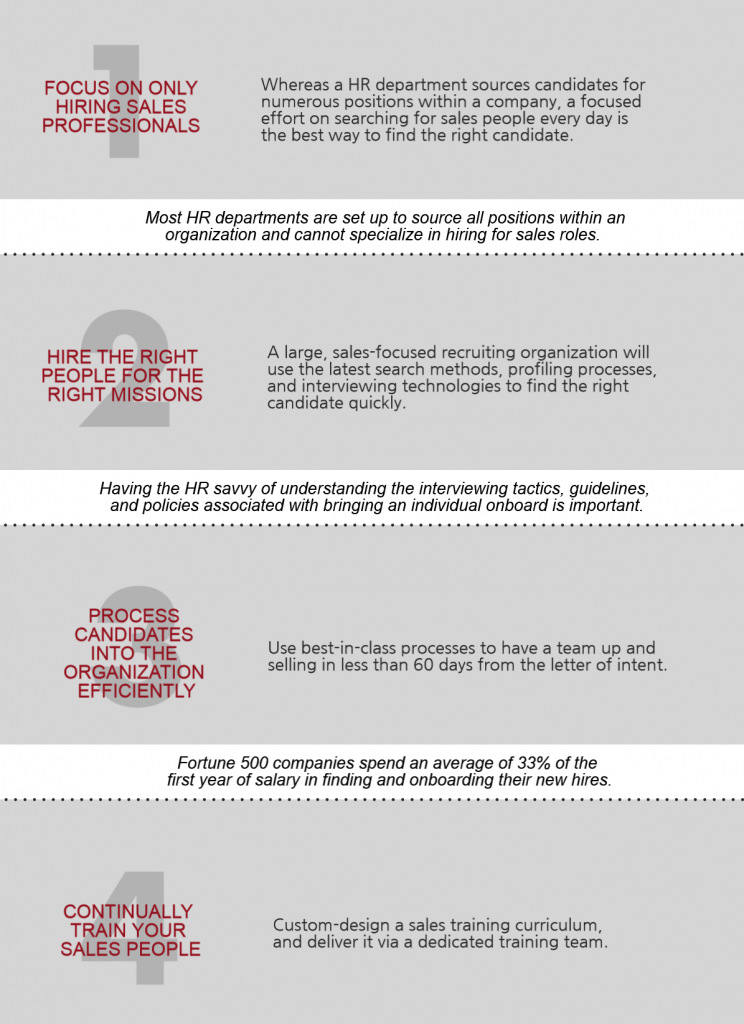When it comes to finding and keeping top talent, today’s sales organizations face more challenges than ever. Companies must have the right processes in place to find the right talent, and then onboard and train that talent effectively. It’s also important that sales talent continually improves and sales teams evolve, in order to stay ahead and remain successful.

A major factor to consider is the onset of millennials in the workplace. In 2015, millennials became dominant in the United States workforce, with more than 53.5 million members, according to Pew Research Center (see chart below). Therefore, sales leaders have to adapt quickly to this changing landscape and to the group’s characteristics. With this shift in workforce characteristics comes a shift in expectations, deliverables and turnover. Add to that the fact that, often times, this challenge must be met with limited or no resources, and the uphill climb for sales leaders can seem steep.
Facing Sales Recruiting Head On
Finding the right talent for the right task is paramount in meeting financial goals. Whether you need lead-generation representatives or enterprise account executives, the task of finding, onboarding, training and managing top talent can put a strain on sales organizations trying to hit their numbers. This struggle exists for several reasons.
First, many organizations aren’t set up to hire sales professionals. Most organizations have understaffed HR departments that are required to source every position within the company. These departments are sourcing administrative staff, accountants, managers, and more—filling all needs. A true sales focus would mean searching for sales people every day. Without this focus, hiring the right candidate can be difficult.
Another challenge is that, while HR may not be adept at hiring good sales people, sales leaders are equally lacking in HR savvy. This includes an understanding of the interviewing tactics, guidelines and policies associated with bringing an individual onboard. Sales leaders often like to go on a “gut feeling” when hiring, which presents its own set of challenges. Gallup research shows that the top 20 percent of sales candidates realize a 10 percent increase in productivity, a 20 percent increase in sales, a 30 percent increase in profitability, a 10 percent decrease in turnover, and a 25 percent decrease in absenteeism.
Once the right candidate is identified and hired, getting him processed and brought onboard the organization also can be difficult. MarketSource has found that Fortune 500 companies spend an average of 33 percent of the first year of salary in finding and onboarding new hires. These costs include activities such as recruiting, advertising, background checks and drug screens, checking references, paying benefits upfront, setting up computers, adding to CRM, processing payroll and implementing expense tools. Higher than normal turnover can become a huge hidden cost to your productivity and bottom line. So, it’s important that your onboarding go smoothly and quickly.
Finally, once you have onboarded the right candidate, you have to train him—not just once through your boot camp, but continually. The logistics of scheduling him into your training queue and holding his sales manager accountable to improve his productivity can be a tall task.
MarketSource helps companies shrink time to revenue by shrinking the time to find the right candidate, and to onboard and train him. You can learn more about shrinking time to revenue from a MarketSource assessment for your company. MarketSource’s sales experts will work with you to define your challenges and design a turnkey solution that produces results in the area of gaining new customers, launching new products, growing market share, optimizing sales expense, or maximizing a mature product. Contact us now.

